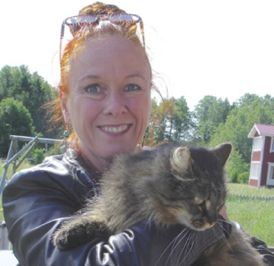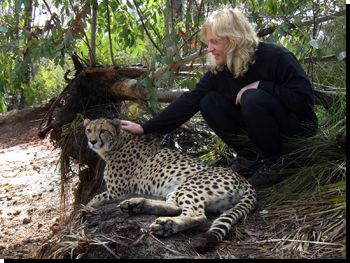The purpose of this project is to study the communication between humans and domestic cats. Specifically, we will investigate how the prosody, including the voice, melody (intonation) and speaking style – in human speech as well as in cat vocalisations – influence the vocal communication.
In Study 1 we will investigate how cats vary their melody (intonation) in human-directed and cat-directed vocalisations. How is cat prosody varied in different contexts or situations? How do human listeners perceive this intonational variation? We will develop a prosodic typology of cat vocalisations and present our results on a popular scientific website.
Study 2 will apply new methods to examine how cats perceive different prosodic cues in human speech. Do they distinguish between different voices (familiar-unfamiliar, adults-children) and speaking styles (pet-directed, adult-directed), and do they prefer certain intonation patterns?
The project primarily concerns basic research and represents pioneering work within human–cat communication. Our results may lead to an improved quality of life for cats and potentially for other companion animals (pets) as well. Understanding the vocal strategies used by humans and cats in human–cat communication will have profound implications for our understanding of how we communicate with our pets in general, and has the potential to improve the relation between animals and humans within several fields, including animal therapy, veterinary medicine, and animal sheltering.
The project is funded by the Marcus and Amalia Wallenberg foundation (MAW) 2016-2022.
Below we have collected some of the presentations of our project and related research that we have used on conferences, research seminars, popular scientific talks etc. We hope that everyone (cat lovers in general, people working with cats, researchers, students etc.) who is interested in our project can find additional information here.
Our paper 'Melody in Human–Cat Communication (Meowsic): Origins, Past, Present and Future' was presented at the national Swedish phonetics conference FONETIK 2016 at KTH Royal Institute of Technology in Stockholm in June 2016.
Robert Eklund presented our project at an invited talk at the University of California at Berkeley, Department of Linguistics 13 September 2016. (Larger file available here).
In September 2016 Robert Eklund presented our project in several popular scientific talks, the first one given at Linköping University. (in Swedish) (Larger file available here).



The research team will collaborate with clinical veterinarians, including Ann-Charlotte Sandberg, with linguists, including Gisela Håkansson, and with zoologists/biologists, including Jennie Westander and Elin Hirsch. Moreover, we will collaborate with some of the world’s leading experts on animal communication and felid vocalisations. This means that we will be in very good position to elucidate important aspects of cat vocalisations and cat perception of human speech from numerous angles, including acoustic-phonetic and communicative.
PhD in applied ethology, Centre for Feline Behaviour and Welfare, Department of Animal Environment and Health, Swedish University of Agricultural Sciences
Professor of general linguistics, Centre for Languages and Literature, Lund University
Emeritus Professor of Linguistics, Berkeley University of California
Curator (emeritus), Mammals
Zoologisches Forschungsmuseum Alexander Koenig, Bonn, Germany
Leg. Swedish and Danish vet., specialised in the diseases of dogs and cats, Landskrona Smådjursklinik
PhD in ethology, head of education and research at Kolmården Wildlife Park